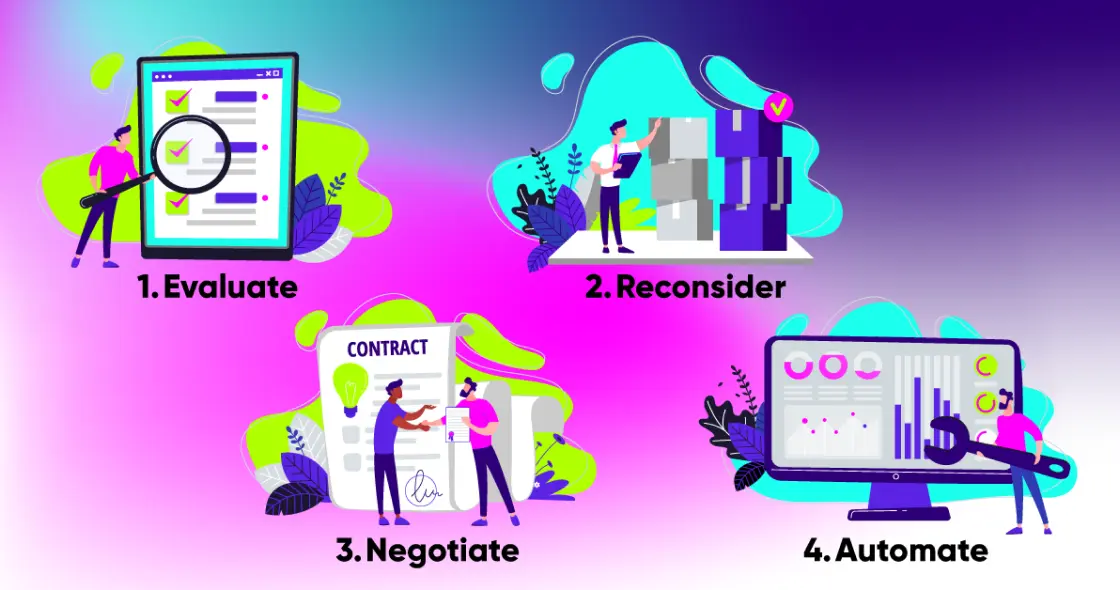Supply chains are no longer the “set it and forget it” systems they used to be. With complications like material shortages and increased shipping costs, sellers have to spend much more time and energy watching their inventory and suppliers.
Luckily, there are 4 simple yet powerful strategies that can minimize the headaches and hours you currently spend on supply chain problems.
1. Evaluate Your Amazon Suppliers
The first thing to consider in your supply chain is your suppliers. Are they meeting your standards? Are they going above and beyond?
Ideally, your suppliers should offer consistent quality, price matching, high-volume manufacturing capacity, regulatory compliance and customer service. But what do these terms really mean, and how can you optimize them for success?
Consistent Quality
One-star ratings frequently make up 5-10% of all product reviews on Amazon. Since every rating under 3 stars hurts your product ranking, minimizing negative reviews is essential. One of the best ways to achieve a positive Amazon score is ensuring that your supplier is both providing high-quality products and having a defect rate as close to zero as possible.
Price Matching
Commerce has gotten more expensive for everyone lately, especially with supply chain shortages and increased fuel costs. No matter how good a relationship you have with your supplier, your bottom line is key. If you notice that other suppliers offer lower prices for the same product, your supplier should offer to match that price to keep you.
High-Volume Manufacturing Capacity
Your supplier should be able to handle a substantially larger order than usual (e.g. +50%) without any delays. If you ever see a sudden surge in purchases, you should have the confidence that your supplier can deliver as much stock as you need with normal lead times. Don’t be afraid to ask your suppliers how much product volume they can handle so you know what their maximum capacity is and whether it can fulfill your needs regularly.
Regulatory Compliance
Make sure your suppliers comply with all necessary regulations for their products. And no matter how much you trust them, get it all in writing. Proper documentation will give you peace of mind and prevent certain disruptions from occurring in the first place.
Customer Service and Communication
How long do you have to wait for your supplier to respond to an email or text message? If you call them, will they pick up the phone? When you have a problem, every minute feels like an hour, and you need to know that they will do everything possible to solve your problems ASAP.

Hopefully you have a great relationship with your suppliers and they check every box on the list above. But what do you do if critical supply issues are not addressed?
2. Reconsider New Potential Suppliers
It’s a dangerous habit to get stuck in your own comfort zone. Even if you have no complaints with your suppliers, it’s still good practice to check periodically if “good enough” can be improved.
Start out with a search of all the manufacturers for your goods (yes, all of them). The easiest thing to do is check prices and see if there are better deals out there. When you contact these other suppliers for price lists, this will also give you a first impression of their customer service. Are they warm, inviting, and helpful? Are they professional and to the point? Are they better, worse, or equal to your current liaisons?
Once you’ve got your price lists in hand, see if there are any deals better than what you have currently. Then, go through the following simple checklist:
- Ask for samples.
- See if anyone is producing superior quality products at similar prices.
- See if they have better timelines.
Remember,you don’t need to work with only one supplier (unless it’s built into your contract). In fact, it’s a very good idea to have secondary suppliers to meet higher-than-usual demands and to have a back-up in case of supply line disruptions. If exclusivity is in your contract, don’t panic, the next step will help.

3. Negotiate (or Renegotiate) Your Contracts
How long ago did you sign the contract with your supplier? Did you carefully scrutinize it or quickly sign and return it so you could start selling? Either way, it may be time to renegotiate.
Here are a few simple things to consider when creating or updating the terms of your Amazon seller contract.
- What happens if exchange rates are volatile?
- What happens if lead times fluctuate?
- What if the supplier fails to meet your needs during peak buying periods?
You should have answers to all these questions in formal written contracts, signed by all parties involved.
If you’ve been a good, regular customer from your supplier, they should be willing to listen to your needs here. If you are currently vetting new suppliers, then your purchase history will strengthen your leverage in negotiations.
If you’re looking into new suppliers, you should know that everything is negotiable, including the “minimums” and the “requirements”. Founder of Honu Worldwide & Trillion Source, Afolabi Oyerokun’s excellent presentation on How to Effectively Negotiate with Suppliers shows techniques to get the best possible prices from suppliers, and explains why they work from both business and cultural perspectives.
4. Automate to Your Advantage
Once you’ve secured the best conditions with your suppliers, the next crucial step is on your side – maintaining your inventory. As simple as this may sound, staying on top of how many units you have, which warehouse they’re in, how much you need to reorder, and when (just to name a few) becomes a full-time job on its own, with the stress compounding as you scale your business.
This is why so many sellers use comprehensive inventory management tools like SoStocked, and ditch their mountain of spreadsheets for good. As an all-in-one inventory platform, SoStocked offers powerful algorithms and more acute calculations, such as Daily Adjusted Velocity, which helps you accurately forecast your buffer stock by number of days.
Advanced sellers can harness this to use a “min-max” restocking strategy, keeping minimum buffer stock and maximum stock as well. This lets you set up an order schedule that will minimize overstock and stockouts, which can boost your Inventory Performance Index scores and reduce fees.
Optimizing Your Amazon Inventory Is Vital – And Constant
As an Amazon seller, it’s important to never get complacent when it comes to your inventory. The best way to save time is by first investing some of your own. Periodically check on suppliers to discover if they can offer you a better deal, whether that be in product quality, prices, or customer service.
You can regain the time spent on strengthening your supply chain by utilizing inventory management software to programmatically monitor, calculate, and restock your supply. After answering a few simple questions, you’ll be able to sit back and let it work its magic.
Once you’ve implemented these tactics, you won’t have to worry about supply chain troubles for a while. Just remember, this is not a once-and-done trick, but a process you should regularly revisit.




